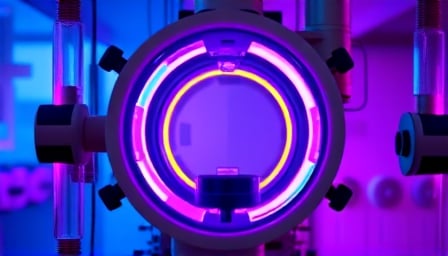Corporate Snapshot: VAT Group AG – Market Context and Sector Dynamics
The latest publicly available information on VAT Group AG indicates a period of relative quiet. No earnings releases, merger announcements, or strategic initiatives have surfaced in the immediate news cycle. Consequently, the company’s share price has remained largely unchanged, trading within a tight corridor without any notable intraday volatility. In contrast, the broader Swiss market has shown modest gains, reflected in the performance of the Swiss Market Index (SLI) and the Swiss Performance Index (SPI). The SLI advanced 0.43 % to 1,956.41 points, while the SPI climbed 0.29 % to 16,530.92 points, signalling a positive sentiment in the Swiss equity market during the most recent trading session.
Industry Positioning and Product Portfolio
VAT Group AG operates as a developer, manufacturer, and supplier of vacuum valves and ancillary components. These products are critical inputs for three interrelated high‑technology sectors:
- Semiconductor Manufacturing – Vacuum systems are integral to processes such as chemical vapor deposition (CVD) and physical vapor deposition (PVD).
- Display Technology – Advanced display panels, including OLED and quantum dot displays, rely on precise vacuum environments for deposition and fabrication steps.
- Solar Panel Production – Photovoltaic cell manufacturing, particularly for crystalline silicon modules, incorporates vacuum processes for deposition and cleaning.
The company’s specialization in these niche markets positions it as a potential supplier to a concentration of global fab and panel operators. While the news cycle lacks explicit data on VAT’s financial performance, its product focus suggests exposure to the cyclical nature of the semiconductor and renewable energy markets.
Market Drivers and Economic Context
- Semiconductor Resilience – Despite periodic supply‑chain constraints, the semiconductor industry has maintained strong demand driven by automotive, consumer electronics, and data‑center expansions.
- Display Innovation – The continuous evolution of high‑resolution, low‑power display technologies fuels sustained investment in advanced deposition equipment.
- Renewable Energy Growth – Global commitments to decarbonization, coupled with falling solar panel costs, sustain a long‑term growth trajectory for photovoltaic manufacturing.
These sectoral dynamics are underpinned by broader macroeconomic trends: increased capital expenditures in clean‑tech infrastructure, rising corporate IT budgets, and government incentives for energy‑efficient technologies. Consequently, VAT Group AG’s core customers are likely to maintain steady equipment purchase cycles, providing a baseline of demand for vacuum valves.
Competitive Landscape
Within each of the three primary sectors, VAT Group AG competes with both large multinational vendors and specialized boutique suppliers. Key competitors include:
- Semiconductor – Companies such as PSM Manufacturing and Advanced Vacuum Systems.
- Display – Firms like Nanotech Vacuum Solutions and TDS Vacuum Engineering.
- Solar – Suppliers such as VestaTech and SunVantage.
A comparative assessment shows that VAT’s focus on integrated development and manufacturing allows it to offer tailored solutions with potentially higher reliability and lower lead times, an advantage in the fast‑paced fabrication environment.
Economic Implications for Share Performance
The stability in VAT’s share price, in the context of a bullish Swiss market, may reflect several factors:
- Absence of Catalysts – No recent earnings announcements or strategic disclosures to shift investor sentiment.
- Sectorial Neutrality – While the underlying industries show growth, the company’s niche positioning may insulate it from broad market swings.
- Liquidity Constraints – A relatively narrow trading range could indicate limited market depth, which is common among mid‑cap technology suppliers.
Investors monitoring VAT Group AG should watch for forthcoming quarterly reports and any industry‑specific developments (e.g., new semiconductor fabs or panel plants) that could serve as price catalysts. Additionally, monitoring regulatory changes in renewable energy subsidies may provide insights into future demand trajectories.
Conclusion
VAT Group AG exemplifies a specialized supplier operating at the intersection of three high‑growth technology sectors. While recent news has not provided direct financial metrics, an analytical view of the company’s product alignment, competitive context, and macro‑economic drivers offers a framework for anticipating its performance. The current positive trajectory of the Swiss equity market suggests an environment conducive to industrial and technology firms, yet VAT’s share price remains largely static pending new information that could influence its valuation.
